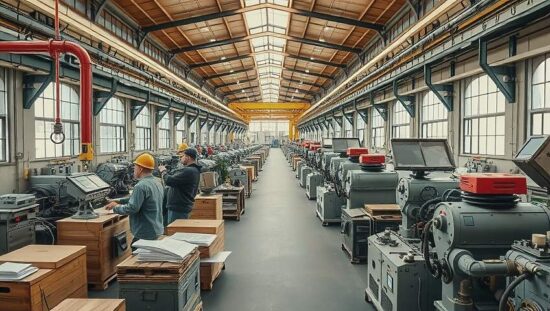German industrial output experienced a modest rebound in September 2025, masking underlying fragility within the nation’s manufacturing sector, according to preliminary data released by Destatis. While seasonally and calendar-adjusted output rose by 1.3% compared to August, a closer examination reveals a more complex picture, raising concerns about the long-term health of German industry.
The temporary boost is largely attributed to a significant 12.3% surge in automobile production, a welcome respite following a steep 16.7% decline in August influenced by factory shutdowns and production restructuring. Gains were also observed in the manufacturing of data processing equipment, electronic and optical products (+5.1%), contributing to the overall positive, though narrowly defined, September figures. However, a decline in the engineering sector (-1.1%) highlights vulnerabilities and indicates that the recovery is unevenly distributed across industrial sub-sectors.
A revision of August’s production data revealed a more substantial 3.7% decrease compared to July, significantly impacting the broader narrative of industrial strength. When measured over a three-month period, industrial output in the third quarter of 2025 was 0.8% lower than in the second quarter, further eroding confidence in a sustained upward trend. Comparing September 2025 to the same month in 2024, production remains 1.0% lower, demonstrating a noticeable lag in overall industrial performance.
The data sparks a renewed debate about the government’s industrial policy and its effectiveness in fostering sustainable growth. While the rebound in the automotive sector is encouraging-potentially reflecting pent-up demand and a response to easing supply chain pressures-reliance on single industry fluctuations paints a precarious image. The persistent decline in engineering output, a crucial element of Germany’s export-oriented economy, necessitates focused intervention and targeted support measures.
Furthermore, the performance of energy-intensive industries presents another layer of complexity. While production in this critical sector showed a slight increase of 0.1% compared to August, it remains down 0.5% over a three-month period and 0.2% lower than in September 2024. This suggests ongoing difficulties linked to high energy costs and potentially reduced international demand, raising questions about the long-term competitiveness of these vital industries. The figures reinforce calls for accelerated investment in renewable energy sources and a comprehensive strategy to mitigate energy costs for German manufacturers, with a particular focus on energy-intensive sectors to safeguard jobs and maintain international standing.
The present situation presents a critical juncture for German policymakers, requiring a nuanced approach that addresses not only immediate economic indicators but also the structural challenges facing the manufacturing base.





